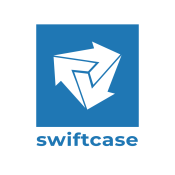Updated 02/09/2020
I am a caffeine addict. Yes the multiple health benefits (protection against Parkinson’s, and heart disease etc.) are nice, but I would probably drink it even if it gave me a lobotomy.
The neurochemical action of caffeine is fascinating: it blocks a receptor in your brain for adenosine, a molecule that carries phosphate groups around to release the high energy from the bonds when needed. We feel tired when adenosine is floating around as it means that all the precious phosphates have been released and we do not have access to as much energy as we would like. Our body is telling us to sleep so we can re-attach more phosphate groups and keep on going. Caffeine, however allows our brain to ignore these signals and so carry on regardless, blissfully ignorant of the depleted stocks.
This is the reason why you will feel even more tired after the effects of caffeine have worn off: the adenosine is still there, and in fact there will be even more since you are effectively running up an energy debt. The only course of action in this scenario is, of course, to relax and drink more!
At SwiftCase we are all about optimising a process to be as productive as possible. When I arrived we were using coffee pods, and this made sense because it provided coffee quickly and with a taste (marginally) better than instant.
 Speed, however, is not the only thing that matters.
Being a developer can be incredibly absorbing. You may want to reduce distractions as a big part of the enjoyment is the ‘flow’ you experience when things are going well. ‘Flow’ is a lovely state of mind, but it can also mean you remain glued to your chair for hours, or you can thunder down a blind alley in the mistaken belief that everything you touch is gold. Having regular breaks to reflect on your progress is vital, helping prevent either health problems due to sedentary behaviour or health problems due to the stress of wasting your time!
This is why I believe that taking the time to pulling a proper coffee is important. Now at SwiftCase we use an espresso machine with steam wand, and will take the time to make a latte with freshly ground beans from a burr gear grinder.
Rather than becoming a delivery medium for caffeine, the process of making coffee is a break in itself: a reason to get out of the chair and contemplate things. Besides that small ‘break’ the process can be a rewarding creative endeavour, through constantly optimising the quantity/grind of the espresso and attempting to make ‘latte art’ (like the masterpiece below) there is no need for it to be a chore.
Since we have introduced the espresso machine, we have tried myriad exotic coffee beans from all over the world, and changed the routine of drinking coffee into an object of discussion, fascination and self-expression (even if that is just the expression of care for a fellow employee by making a coffee for them).
In this way, coffee is like any business process that helps your company do or be better. If you are merely making it faster, is it always optimised? Some mundane parts will benefit from being faster, but are you thinking about what makes it great to work here or provide a service to clients? If you are worried about wasting 5 minutes making a delicious drink are you too stressed to be able to do your job properly?
Taking sufficient time to reflect and have a break will allow you to focus on what matters, and to me there is no argument what matters the most: coffee.
Speed, however, is not the only thing that matters.
Being a developer can be incredibly absorbing. You may want to reduce distractions as a big part of the enjoyment is the ‘flow’ you experience when things are going well. ‘Flow’ is a lovely state of mind, but it can also mean you remain glued to your chair for hours, or you can thunder down a blind alley in the mistaken belief that everything you touch is gold. Having regular breaks to reflect on your progress is vital, helping prevent either health problems due to sedentary behaviour or health problems due to the stress of wasting your time!
This is why I believe that taking the time to pulling a proper coffee is important. Now at SwiftCase we use an espresso machine with steam wand, and will take the time to make a latte with freshly ground beans from a burr gear grinder.
Rather than becoming a delivery medium for caffeine, the process of making coffee is a break in itself: a reason to get out of the chair and contemplate things. Besides that small ‘break’ the process can be a rewarding creative endeavour, through constantly optimising the quantity/grind of the espresso and attempting to make ‘latte art’ (like the masterpiece below) there is no need for it to be a chore.
Since we have introduced the espresso machine, we have tried myriad exotic coffee beans from all over the world, and changed the routine of drinking coffee into an object of discussion, fascination and self-expression (even if that is just the expression of care for a fellow employee by making a coffee for them).
In this way, coffee is like any business process that helps your company do or be better. If you are merely making it faster, is it always optimised? Some mundane parts will benefit from being faster, but are you thinking about what makes it great to work here or provide a service to clients? If you are worried about wasting 5 minutes making a delicious drink are you too stressed to be able to do your job properly?
Taking sufficient time to reflect and have a break will allow you to focus on what matters, and to me there is no argument what matters the most: coffee.

